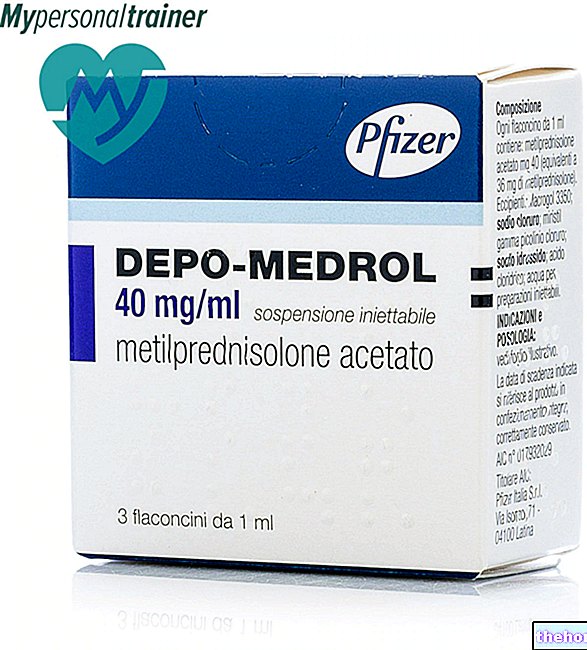Active ingredients: Salbutamol
BRONCOVALEAS 5mg / ml Solution to be nebulised
Broncovaleas package inserts are available for pack sizes:- BRONCOVALEAS 5mg / ml Solution to be nebulised
- BRONCOVALEAS 100 micrograms / spray pressurized inhalation suspension
- BRONCOVALEAS 2 mg / 5 ml syrup
- BRONCOVALEAS 2 mg tablets
Why is Broncovaleas used? What is it for?
PHARMACOTHERAPEUTIC CATEGORY
Selective agonist of beta2-adrenergic receptors.
THERAPEUTIC INDICATIONS
BRONCOVALEAS nebuliser solution 5mg / ml is indicated for the treatment of bronchospasm in patients over 2 years of age with reversible obstructive airway diseases and acute attacks of bronchospasm.
Contraindications When Broncovaleas should not be used
Hypersensitivity to the active substance or to any of the excipients.
Precautions for use What you need to know before taking Broncovaleas
Sympathomimetic agents should be used with great caution in patients who may be particularly susceptible to their effects.
In patients with severe or unstable asthma, bronchodilators should not be the only or primary therapeutic treatment.
Severe asthma requires regular medical evaluation, including pulmonary function tests, as such patients are at risk of severe attacks and even death.
Physicians should consider the need to use the maximum recommended doses of inhaled and / or oral steroids in these patients.
In patients with diseases such as: coronary heart disease, arrhythmias, arterial hypertension and in patients with glaucoma, hyperthyroidism, pheochromocytoma, diabetes and prostatic hypertrophy, the product should be used only in case of absolute necessity.
There is evidence from post-marketing data and published literature of rare cases of myocardial ischaemia associated with the use of salbutamol. Patients with pre-existing severe heart disease (eg, ischemic heart disease, tachyarrhythmia, or severe heart failure) who receive salbutamol for respiratory disease , they should be advised to tell their doctor if chest pain or symptoms of worsening heart disease occur.
The need to resort to beta2-agonists more frequently for symptomatology control indicates a worsening of asthma: in this circumstance the patient's treatment plan must be modified.
Sudden aggravation of asthma is potentially life-threatening and consideration should be given to initiating corticosteroid therapy or increasing its dosage.
Even severe hypokalaemia may result from beta2-agonist therapy, especially in the case of parenteral administration or nebulisation. This effect can be enhanced by concomitant treatment with xanthine derivatives, steroids, diuretics and by hypoxia. It is recommended, in such situations, to regularly check serum potassium levels.
Broncovaleas Solution to be nebulized, like other beta-agonists, can cause reversible metabolic alterations such as hyperglycaemia that diabetic patients are not always able to balance and cases of ketoacidosis have been reported.
Simultaneous administration of glucocorticoids can aggravate this effect.
Lactic acidosis has been reported following high therapeutic doses of short-acting intravenous and nebulised beta-agonists, especially in patients being treated for an asthma exacerbation (see Undesirable Effects section).
Increased lactate levels can cause dyspnoea and compensatory hyperventilation, which could be misinterpreted as a sign of asthma treatment failure and lead to inappropriate intensification of short-acting beta-agonist treatment.
Therefore in this situation it is recommended that patients be monitored for the development of elevated serum lactate levels and subsequent metabolic acidosis.
A few cases of acute narrow-angle glaucoma have been reported in patients treated with combination salbutamol and ipratropium bromide administered by nebulisation. The combination of salbutamol with anticholinergics administered by nebulisation should therefore be used with caution. Patients should receive adequate instructions on correct administration and be advised to avoid the solution or nebulizer coming into contact with the eyes.
Interactions Which drugs or foods can modify the effect of Broncovaleas
Tell your doctor or pharmacist if you have recently taken any other medicines, even those without a prescription.
As a rule, beta2-agonist drugs and non-selective beta-blocking drugs, such as propranolol, should not be prescribed at the same time.
Warnings It is important to know that:
As with other drugs administered by inhalation, paradoxical bronchospasm may occur, with increased wheezing immediately after inhalation (see section Undesirable Effects)
In the event that this occurs, immediately take a different fast-acting bronchodilator, immediately discontinue the previous therapy and institute an alternative.
Inform your doctor if you have heart disease or angina before starting therapy with salbutamol.
Pregnancy and breastfeeding.
Ask your doctor or pharmacist for advice before taking any medicine
Pregnancy:
The use of drugs during pregnancy should only be considered if the benefit to the mother is greater than the possible risk to the fetus. As with most drugs, there is little evidence in women about the safety of salbutamol in the early stages of pregnancy. pregnancy, but animal studies show harmful effects on the fetus at very high dosages.
Feeding time:
Because salbutamol is probably secreted into breast milk it is not recommended for use in nursing mothers unless the foreseeable benefits outweigh the potential risks. It is not known whether salbutamol in breast milk can cause harmful effects on the infant.
Effects on ability to drive and use machines
No effects on ability to drive and use machines have been reported.
Important information about some of the ingredients
Broncovaleas nebuliser solution contains E218 methyl parahydroxybenzoate, E214 ethyl parahydroxybenzoate, butyl parahydroxybenzoate. They can cause allergic reactions (even delayed).
For those who carry out sporting activities: the use of the drug without therapeutic necessity constitutes doping and can in any case determine positive anti-doping tests.
Dosage and method of use How to use Broncovaleas: Dosage
Broncovaleas Nebulizer Solution is for inhalation use only, and should only be used through a suitable nebulizer.
The solution should not be swallowed or injected. Salbutamol has a duration of action of 4 to 6 hours in most patients. 1 drop (0.05 ml) of Broncovaleas Solution to be nebulised contains 0.25 mg of Salbutamol.
Correlation of drops - ml - mg
Attention
In consideration of the risk of overdose due to administration error in children, it is RECOMMENDED to follow the dosage prescribed by the Doctor paying particular attention to the correspondence: "drops - ml - mg".
Children 2 to 12 years: Initial dosage should be based on body weight (0.1 to 0.15 mg / kg per dose), with subsequent titration until desired clinical response is achieved.
The dose should never exceed 2.5 mg 3 or 4 times a day per nebulization (carefully read the following table)
Adults and children over 12 years: 2.5 mg of salbutamol administered three or four times a day by nebulisation. A dosing frequency greater than 4 times a day or doses greater than 2.5 mg are not recommended.
To administer 2.5 mg of salbutamol, dilute 0.5 ml of the 5 mg / ml inhalation solution with 2.5 ml of sterile saline. The flow rate of the inhaler should be adjusted to deliver the dose within 5 to 15 minutes.
Since undesirable effects may occur at high dosages, the dosage and frequency of administration should only be changed on the advice of the physician.
Renew the solution contained in the nebulizer vial at least once a day.
Instructions for Use
To prevent the bottle from being easily opened, a dropper was used to open which requires a movement that is not instinctive but rational.
To open the bottle it is necessary to exert a pressure on the dropper ring nut and a counterclockwise twist at the same time.
To close the bottle, the ring nut must be fully screwed clockwise as usual.
To make sure that the safety mechanism is properly triggered, turn the ring counterclockwise without pressing and check that the bottle cannot be opened.
Overdose What to do if you have taken an overdose of Broncovaleas
In case of accidental ingestion / intake of an excessive dose of Broncovaleas solution to be nebulized, notify your doctor immediately or contact the nearest hospital.
The main signs and symptoms of overdose are: agitation, tremors, tachycardia (palpitations), restlessness, as well as metabolic effects such as hypokalaemia and lactic acidosis.
The specific antidote in case of accidental overdose is constituted by cardioselective beta-blocking drugs, which must however be prescribed with caution because, in sensitive subjects, they can cause severe crises of bronchospasm.
Following salbutamol overdose, serum potassium levels should be monitored. Monitoring of serum lactate levels and subsequent metabolic acidosis may be indicated (particularly if tachypnea persists or worsens despite resolution of other signs of bronchospasm such as dyspnoea).
If you have any questions about the use of Broncovaleas nebuliser solution, ask your doctor or pharmacist.
Side Effects What are the side effects of Broncovaleas
Like all medicines, Broncovaleas nebuliser solution can cause side effects, although not everybody gets them.
Adverse events are listed below by organ, organ / system and frequency. Frequencies are defined as: very common (≥1 / 10), common (≥1 / 100,
Disorders of the immune system
Very rare: hypersensitivity reactions including: angioedema, urticaria, bronchospasm, hypotension and collapse
Metabolism and nutrition disorders
Rare: hypokalaemia. Potentially severe hypokalaemia may be associated with beta-2-agonist therapy.
Not known: lactic acidosis (see section Special warnings)
Nervous system disorders
Very common: tremor
Common: headache
Very rare: hyperactivity
Cardiac disorders
Common: tachycardia, palpitations
Rare: cardiac arrhythmias including atrial fibrillation, supraventricular tachycardia and ectopic beats
Very rare: myocardial ischaemia
Vascular pathologies
Rare: peripheral vasodilation
Respiratory, thoracic and mediastinal disorders
Very rare: paradoxical bronchospasm
Gastrointestinal disorders
Uncommon: mouth and throat irritation
Musculoskeletal and connective tissue disorders
Common: muscle cramps
Very rare: sensations of muscle tension
Compliance with the instructions contained in the package leaflet reduces the risk of undesirable effects.
Reporting of side effects
If you get any side effects, talk to your doctor or pharmacist. This includes any possible side effects not listed in this leaflet. Undesirable effects can also be reported directly via the national reporting system at: www.agenziafarmaco.gov.it/it/responsabili. By reporting side effects you can help provide more information on the safety of this medicine.
Expiry and Retention
Expiry: see the expiry date printed on the package.
The expiry date refers to the product in intact packaging, correctly stored.
WARNING: do not use the medicine after the expiry date shown on the package.
Broncovaleas solution should be used within 3 months after first opening.
Store at a temperature not exceeding 25 ° C. Keep the medicine in the original package to protect the bottle from light.
Medicines should not be disposed of via wastewater or household waste.
Ask your pharmacist how to throw away medicines you no longer use. This will help protect the environment.
KEEP THIS MEDICINAL PRODUCT OUT OF THE SIGHT AND REACH OF CHILDREN
Composition and pharmaceutical form
COMPOSITION
100 ml of solution contain:
Active ingredient: Salbutamol 500 mg (as Salbutamol sulfate 600 mg)
Excipients: E218 methyl parahydroxybenzoate, E214 ethyl parahydroxybenzoate, butyl parahydroxybenzoate, Sodium chloride, Sulfuric acid sol 1N, Purified water.
PHARMACEUTICAL FORM AND CONTENT
Solution to be sprayed. 15 ml amber bottle
Source Package Leaflet: AIFA (Italian Medicines Agency). Content published in January 2016. The information present may not be up-to-date.
To have access to the most up-to-date version, it is advisable to access the AIFA (Italian Medicines Agency) website. Disclaimer and useful information.
01.0 NAME OF THE MEDICINAL PRODUCT
BRONCOVALEAS 5 MG / ML SOLUTION TO NEBULIZE
02.0 QUALITATIVE AND QUANTITATIVE COMPOSITION
100 ml of solution contain:
active principle: salbutamol 0.5 g (as salbutamol sulfate 600 mg).
Excipients with known effects: E218 methyl parahydroxybenzoate, E214 ethyl parahydroxybenzoate, butyl paralhydroxybenzoate.
For the full list of excipients, see section 6.1.
03.0 PHARMACEUTICAL FORM
Solution to be sprayed.
04.0 CLINICAL INFORMATION
04.1 Therapeutic indications
BRONCOVALEAS nebuliser solution 5 mg / ml is indicated for the treatment of bronchospasm in patients over 2 years of age with reversible obstructive airway diseases and acute attacks of bronchospasm.
04.2 Posology and method of administration
Broncovaleas Nebulizer Solution is for inhalation use only, and should only be used through a suitable nebulizer. The solution should not be swallowed or injected. Salbutamol has a duration of action of 4 to 6 hours in most patients.
1 drop (0.05 ml) of Broncovaleas Solution to be nebulised contains 0.25 mg of 0.4 5
Salbutamol.
Children 2 to 12 years: Initial dosage should be based on body weight (0.1 to 0.15 mg / kg per dose), with subsequent titration until desired clinical response is achieved.
The dose should never exceed 2.5 mg 3 or 4 times a day per nebulization (carefully read the following table)
Adults and children over 12 years: 2.5 mg of salbutamol administered three or four times a day by nebulisation. A dosing frequency greater than 4 times a day or doses greater than 2.5 mg are not recommended.
To administer 2.5 mg of salbutamol, dilute 0.5 ml of the 5 mg / ml inhalation solution with 2.5 ml of sterile saline. The flow rate of the inhaler should be adjusted to deliver the dose within 5 to 15 minutes.
Since undesirable effects may occur at high dosages, the dosage and frequency of administration should only be changed on the advice of the physician.
Renew the solution contained in the nebulizer vial at least once a day.
04.3 Contraindications
Hypersensitivity to the active substance or to any of the excipients listed in section 6.1.
04.4 Special warnings and appropriate precautions for use
Sympathomimetic agents should be used with great caution in patients who may be particularly susceptible to their effects.
In patients with severe or unstable asthma, bronchodilators should not be the only or primary therapeutic treatment.
Severe asthma requires regular medical follow-up, including pulmonary function tests, as such patients are at risk of severe attacks and even death.
Physicians should consider the need to use the maximum recommended doses of inhaled and / or oral steroids in these patients.
In patients with diseases such as: coronary heart disease, arrhythmias, arterial hypertension, and in patients with glaucoma, hyperthyroidism, pheochromocytoma, diabetes and prostatic hypertrophy, the product should be used only in case of absolute necessity.
There is evidence from post-marketing data and published literature of rare cases of myocardial ischaemia associated with the use of salbutamol. Patients with pre-existing severe heart disease (eg, ischemic heart disease, tachyarrhythmia, or severe heart failure) who receive salbutamol for respiratory disease , they should be advised to tell their doctor if chest pain or symptoms of worsening heart disease occur.
The need to resort to beta2-agonists more frequently for symptomatology control indicates a worsening of asthma control; in this circumstance the patient's treatment plan must be modified.
Sudden aggravation of asthma is potentially life-threatening and consideration should be given to initiating corticosteroid therapy or increasing its dosage.
Even severe hypokalaemia may follow therapy with beta2-agonists, especially in the case of parenteral administration and / or nebulization. This effect can be enhanced by concomitant treatment with xanthine derivatives, steroids, diuretics and by hypoxia. It is recommended in such situations to regularly check serum potassium levels.
As with other drugs administered by inhalation, paradoxical bronchospasm may occur, with increased wheezing immediately after inhalation.
In the event that this occurs, immediately take a different fast-acting bronchodilator, immediately discontinue the previous therapy and institute an alternative.
Broncovaleas Solution to be nebulized, like other beta-agonists, can cause reversible metabolic alterations such as hyperglycaemia that diabetic patients are not always able to balance and cases of ketoacidosis have been reported.
Simultaneous administration of glucocorticoids can aggravate this effect.
Lactic acidosis has been reported following high therapeutic doses of short-acting intravenous and nebulised beta-agonists, especially in patients being treated for an asthma exacerbation (see section 4.8).
Increased lactate levels can cause dyspnoea and compensatory hyperventilation, which could be misinterpreted as a sign of asthma treatment failure and lead to inappropriate intensification of short-acting beta-agonist treatment.
Therefore in this situation it is recommended that patients be monitored for the development of elevated serum lactate levels and subsequent metabolic acidosis.
A few cases of acute narrow-angle glaucoma have been reported in patients treated with combination salbutamol and ipratropium bromide administered by nebulisation. The combination of salbutamol with anticholinergics administered by nebulisation should therefore be used with caution. Patients should receive adequate instructions on correct administration and be advised to avoid the solution or nebulizer coming into contact with the eyes.
Important information about some of the ingredients
Broncovaleas nebuliser solution contains E218 methyl parahydroxybenzoate, E214 ethyl parahydroxybenzoate, butyl parahydroxybenzoate. They can cause allergic reactions (even delayed) and, exceptionally, bronchospasm.
04.5 Interactions with other medicinal products and other forms of interaction
As a rule, beta2-agonist drugs and non-selective beta-blocking drugs, such as propranolol, should not be prescribed at the same time (see section 4.4).
04.6 Pregnancy and lactation
Pregnancy:
The use of drugs during pregnancy should only be considered if the benefit to the mother is greater than the possible risk to the fetus.
As with most drugs, there is little evidence in women on the safety of albuterol in early pregnancy, but animal studies show harmful effects on the fetus at very high doses.
Feeding time:
Because salbutamol is probably secreted into breast milk it is not recommended for use in nursing mothers unless the foreseeable benefits outweigh the potential risks. It is not known whether salbutamol in breast milk can cause harmful effects on the infant.
04.7 Effects on ability to drive and use machines
No effects on ability to drive and use machines have been reported.
04.8 Undesirable effects
Adverse events are listed below by organ, organ / system and frequency. Frequencies are defined as: very common (≥1 / 10), common (≥1 / 100,
Disorders of the immune system
Very rare: hypersensitivity reactions including: angioedema, urticaria, bronchospasm, hypotension and collapse
Metabolism and nutrition disorders
Rare: hypokalaemia.
Potentially severe hypokalaemia may be associated with beta-2 agonist therapy.
Not known: lactic acidosis (see section 4.4)
Nervous system disorders
Very common: tremor
Common: headache
Very rare: hyperactivity
Cardiac pathologies
Common: tachycardia, palpitations
Rare: cardiac arrhythmias including atrial fibrillation, supraventricular tachycardia and ectopic beats
Very rare: myocardial ischaemia
Vascular pathologies
Rare: peripheral vasodilation
Respiratory, thoracic and mediastinal disorders
Very rare: paradoxical bronchospasm
Gastrointestinal disorders
Uncommon: mouth and throat irritation.
Musculoskeletal and connective tissue disorders
Common: muscle cramps
Very rare: sensations of muscle tension
Reporting of suspected adverse reactions
Reporting of suspected adverse reactions occurring after authorization of the medicinal product is important as it allows continuous monitoring of the benefit / risk balance of the medicinal product. Healthcare professionals are asked to report any suspected adverse reactions via the national reporting system. "Street address: www.aifa.gov.it/responsabili.
04.9 Overdose
The main signs and symptoms of overdose are: agitation, tremors, tachycardia (palpitations), restlessness, as well as metabolic effects such as hypokalaemia and lactic acidosis.
The specific antidote in case of accidental overdose is constituted by cardioselective beta-blocking drugs, which must however be prescribed with caution because, in sensitive subjects, they can cause severe crises of bronchospasm.
Following salbutamol overdose, serum potassium levels should be monitored. Monitoring of serum lactate levels and subsequent metabolic acidosis may be indicated (particularly if tachypnea persists or worsens despite resolution of other signs of bronchospasm such as dyspnoea).
05.0 PHARMACOLOGICAL PROPERTIES
05.1 Pharmacodynamic properties
Broncovaleas Solution to be sprayed
Pharmacotherapeutic group: Aerosol adrenergics - selective beta-2-adrenergic receptor agonists.
ATC code: R03AC02.
Preclinical research has shown that salbutamol causes a selective stimulation of beta2-adrenergic receptors in the bronchial muscles, resulting in an increase in endocellular cyclic AMP, an indispensable factor for the resolution of bronchospasm.
Both in vitro and in vivo, at bronchodilator doses, the action of Salbutamol on cardiac beta 1- adrenergic receptors is almost negligible. Clinical findings confirm the experimental data on the specific bronchodilator activity of Salbutamol, demonstrated by the favorable variations of the spirometric indices in absence of cardiac stimulation.
More recent studies also attribute to Salbutamol a "stabilizing action on the mast cell membrane, capable of preventing the diffusion of histotoxins, consequent to an" abnormal antigen-antibody reaction. This clinically strengthens the use of Salbutamol in allergic asthmatic disease.
05.2 Pharmacokinetic properties
Salbutamol is rapidly absorbed from the gastrointestinal tract and gradually by inhalation and is excreted primarily via the urine, partly as unchanged salbutamol, partly as glucuronide or sulfate conjugate.
The average life of Salbutamol is between 2 and 7 hours. Generally the shortest values are for intravenous administration, the intermediate values for oral administration and the longest values for aerosol administration.
05.3 Preclinical safety data
The oral LD50 of salbutamol is higher than 2000 mg / kg in rats and mice; intravenously it is 60.5 mg / kg in rats and 72.5 mg / kg in mice; intraperitoneally it is 74.8 mg / kg in the rat and 82.2 mg / kg in the mouse.
Aerosol administration for 10 weeks, at a dose of about 2 mg / kg per day, does not cause any intolerance in the rat.
Salbutamol is well tolerated for repeated oral treatments in the dog (10 mg / kg per day for 14 weeks) and in the rat (20 mg / kg per day in the diet for 28 weeks).
06.0 PHARMACEUTICAL INFORMATION
06.1 Excipients
E218 methyl parahydroxybenzoate, E214 ethyl parahydroxybenzoate, butyl parahydroxybenzoate, sodium chloride, sulfuric acid sol 1n, purified water.
06.2 Incompatibility
Not known.
06.3 Period of validity
3 years.
Broncovaleas nebuliser solution should be used within 3 months after first opening.
06.4 Special precautions for storage
Store at a temperature not exceeding 25 ° C. Store the product in the original package to protect the bottle from light.
06.5 Nature of the immediate packaging and contents of the package
15ml bottle closed with plastic screw dropper cap with child resistant closure.
06.6 Instructions for use and handling
Renew the solution contained in the nebulizer vial at least once a day.
07.0 MARKETING AUTHORIZATION HOLDER
Valeas s.p.a. - Chemical and Pharmaceutical Industry - Via Vallisneri, 10 - 20133 Milan.
08.0 MARKETING AUTHORIZATION NUMBER
Broncovaleas 0.5% solution to be sprayed - bottle 15 ml AIC N. 022991057
09.0 DATE OF FIRST AUTHORIZATION OR RENEWAL OF THE AUTHORIZATION
May 2010




























